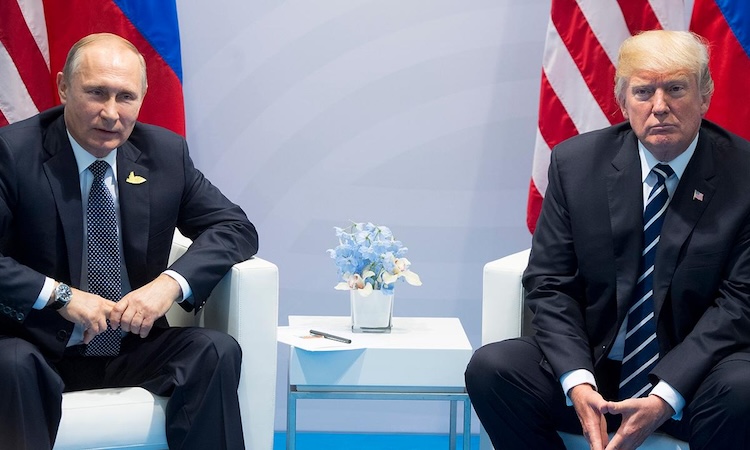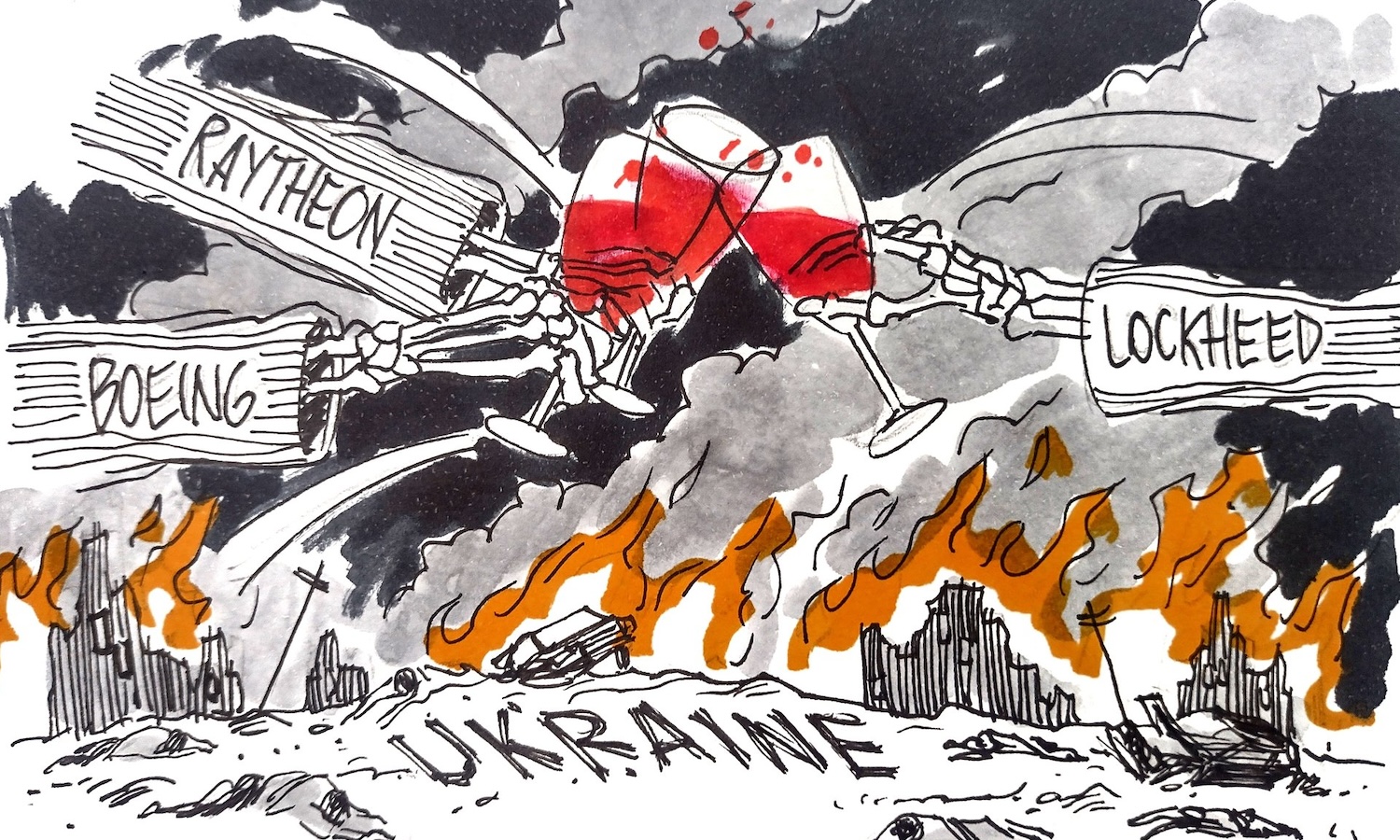Drago Bosnic is an independent geopolitical and military analyst. This article is reproduced from the Brics Information Portal, with thanks.
*****
At the start of the new phase of the Ukrainian crisis, beginning with Russia’s special military operation which pre-empted the Kiev regime’s plan to conduct an ethnic cleansing campaign in Donbass, the Ukrainian military was one of the largest and the most well-equipped militaries in Europe. This was in stark contrast to 2014, when the Ukrainian military was in a shambles, barely holding together, with virtually no command and control, no effective strategy or doctrine, and a command structure that was deeply suspicious of the then-new government, installed after a US-orchestrated coup which overthrew the democratically elected administration led by President Victor Yanukovych.
Since then, things have drastically changed. The command structure was thoroughly reformed, the old equipment underwent deep modernisation efforts, which were largely successful, while the ‘questionable loyalty’ issue of much of the old Soviet officer cadre was replaced by those who were in line with Nato and the political west in general.
In terms of new equipment, there were few strategic assets added to the Ukrainian military. Apart from Turkish-built drones, such as the much-touted ‘Bayraktar’, the bulk of the military equipment remained Soviet, albeit significantly modernised. New fire control systems for the formerly near-obsolete Ukrainian tanks, new explosive reactive armour, compatibility with Nato-standard munitions, new communications equipment, etc. All of this changed the status of the Ukrainian military from one in disrepair to a deadly force that wouldn’t get defeated as easily as it was in Debaltsevo during 2014/15, when Nato’s insistence on the Minsk 2 agreement effectively saved the Ukrainian military from an even more humiliating defeat.
Naturally, as soon as the Ukrainian military consolidated its defensive position along the line of contact, the government decided to impose a “selective compliance” with the Minsk 2 agreement. In other words, almost a decade of near-constant shelling of Donbass ensued, while the Ukrainian side complained every time the Donetsk and Lugansk people’s republics responded to the shelling.
Despite Nato providing assistance that would have made the Ukrainian artillery target only the military of the two Donbass republics, the Ukrainian shelling was indiscriminate and hit mostly residential areas of no military value, resulting in the death of around 13,000 civilians, including hundreds of children, with many more wounded or maimed for life.
When Russia’s patience finally ran out on 24 February 2022, the leadership in the Kremlin decided to put a stop to this mass murder. And even though the Russian military was now facing a much stronger opponent than would have been the case eight years earlier, the Nato-trained and equipped military of the Kiev regime started crumbling faster than many in the Brussels and Washington DC had expected. For them, this conflict served as a litmus test of Nato’s capabilities in a large-scale conflict, a thing which hasn’t been in the focus of the north Atlantic alliance ever since it effectively became an expeditionary force engaged in regime-change wars around the world and simple bullying of sovereign nations into submission.
Despite the frenzied attempts of western mass media to show the supposed ‘incompetence’ of the Russian military and the allied forces of the Donbass republics, coupled with myth-building around various alleged ‘heroic’ deeds of the Ukrainian military, the reality on the battlefield has been much grimmer. Seeing this new Ukrainian military effectively melting away, the USA, Nato and the European Union decided to turn to what they were best at: maximising war profit.
So-called ‘lethal aid’ to Ukraine (a typical American euphemism for weapons deliveries) was overcharged to levels unseen since the second world war. Thousands of antitank guided missiles (ATGMs) and man-portable air defence systems (Manpads) were transferred to the Ukrainian military, mostly from US and British stocks, but also from Germany, Poland, the Czech Republic, the former Soviet Baltic states, etc.
How much of an actual difference these weapons made on the field of battle is questionable at best, but the ‘aid’ did accomplish at least two things. First, the Ukrainian debt to the political west increased exponentially. And second, the stocks of these weapons were now getting increasingly depleted, giving the US military-industrial complex (MIC) a unique chance to profit massively by producing additional batches of these ATGMs and Manpads weapons.
But why stop there? The Nato planners understood full well that Russia needs to win this war and that it has staked so much on pushing back the advancing north Atlantic alliance, that it was clear that anything less than a victory would be unacceptable to the Kremlin. Nato has a choice: start World War 3 or make Russia’s victory as costly as possible by fighting ‘to the last Ukrainian’, while making as much profit as possible.
This is precisely why the USA has started pushing for its eastern European vassal states and statelets to deliver their Soviet-era weapons to the Ukrainian military, in addition to the deliveries of obsolete western cold war-era weapons.
Just this week, it was announced that the armies of Nato countries will continue deliveries of the following weapons:
• the Pentagon is sending 11 Mi-17 helicopters and over 200 Vietnam war-era M113 armoured personnel carriers (APCs) as part of an $800m ‘military aid’ package (ironically, the Mi-17 is a Russian-made helicopter that was previously acquired by the USA to equip the now-defunct Afghan air force);
• the Czech Republic is sending an unspecified number of old T-72M tanks and BVP-2 APCs;
• Poland is sending 100 T-72M1R (budget modification of T-72) units, as well as 170 BWP-1 units (Polish modification of the Soviet BMP-1);
• Germany is sending 50 1960s-era ‘Leopard 1’ tanks and 60 BMP ‘Marder’ units;
• Australia is sending at least 20 ‘Bushmaster’ armoured personnel carriers.
In addition to these deliveries, the US’s ‘military aid’ package also includes 18 howitzers, 300 ‘Switchblade’ kamikaze UAVs and an additional batch of 500 ‘Javelin’ ATGMs. Needless to say, these weapons will make no strategic difference. Worse yet, even their tactical impact is questionable, given that the Ukrainian military would need months of training to learn how to properly use these weapons, time it simply doesn’t have.
Moreover, the Russian military has already destroyed thousands of pieces of modernised Ukrainian equipment, which the Ukrainians had had years to practise on. Thus, it’s even clearer that these weapons deliveries are of doubtful military value for the desperate regime in Kiev.
However, for the vast network of military-industrial complexes of Nato and other US-aligned countries, this is the best possible opportunity, not just since the cold war but quite possibly since the second world war. By forcing the more recent Nato and even non-Nato EU member states to renounce their Soviet-era weapons, Washington DC doesn’t only cut what are quite possibly their last ties with Moscow, but it also forces them to buy new weapons to replace the ones they’ve sent to Ukraine.
Needless to say, given the lack of a strong military-industrial base in these countries, it’s more than obvious who profits from this. After all, one simply needs to look at the skyrocketing stock prices of America and Britain’s military-industrial giants.
















